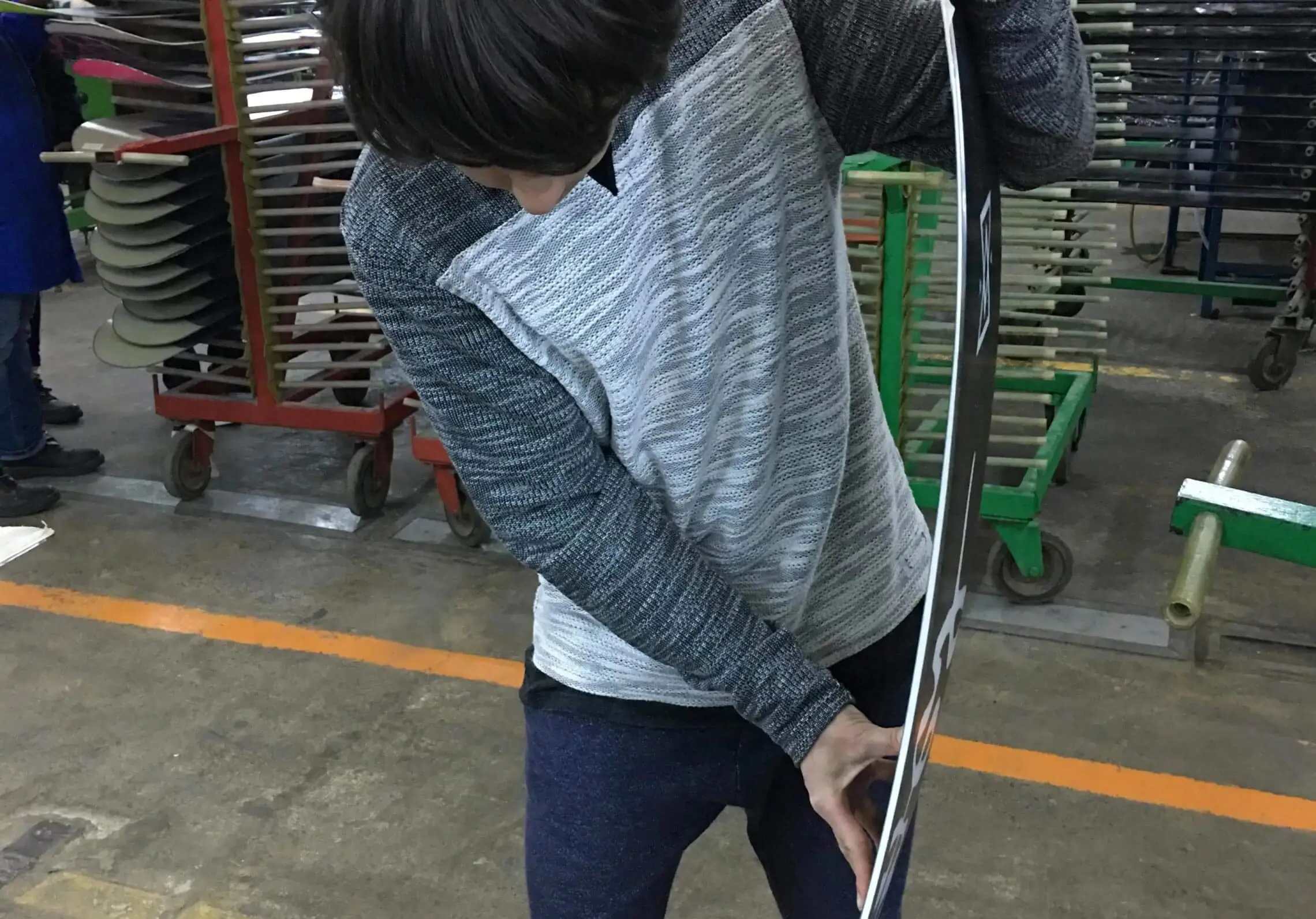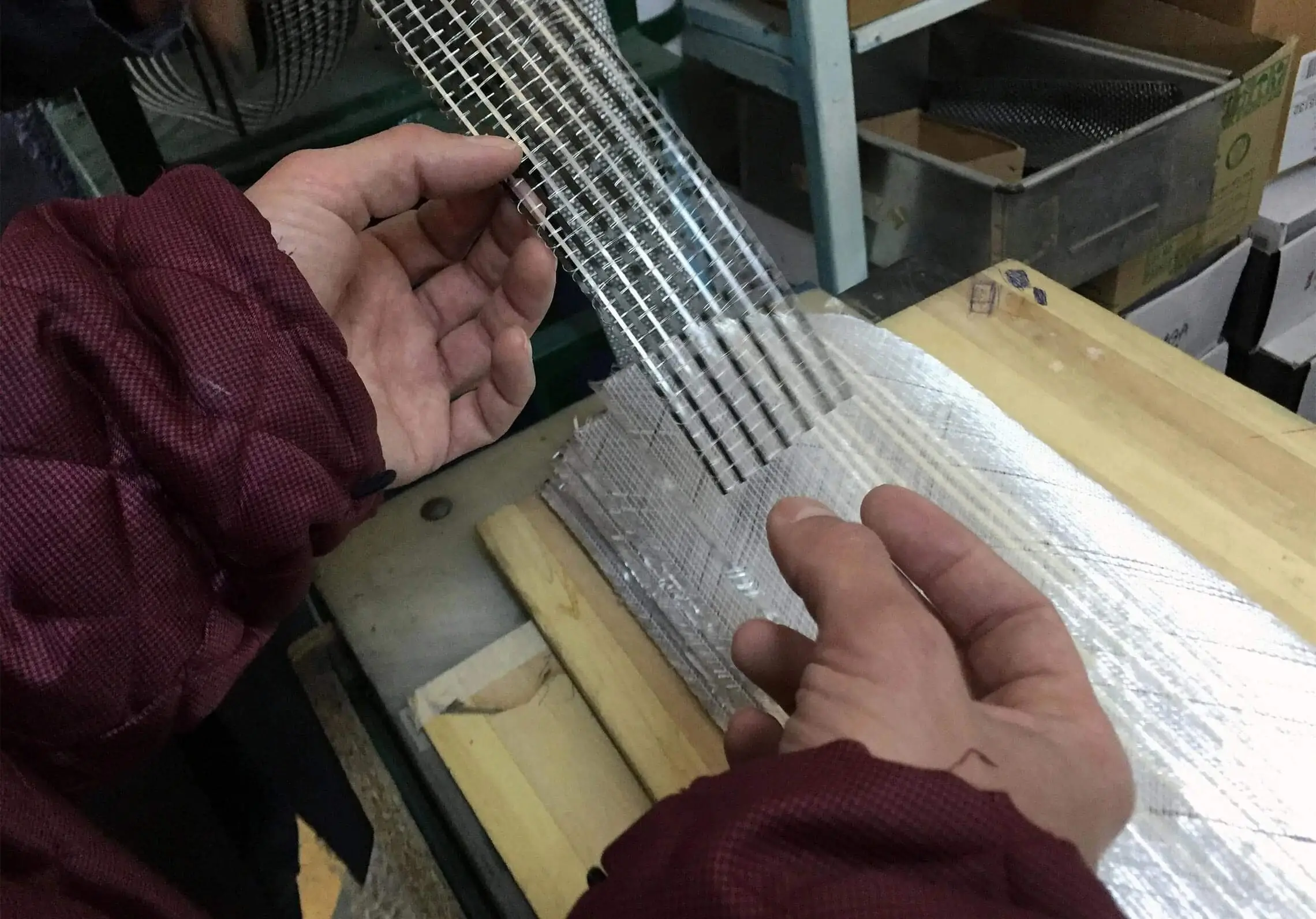Freestyle Snowboards
Freestyle snowboards are usually designed softer for boxing over rails or kicking in fun parks. They are also slightly shorter in length, which makes them suitable for beginners. For those who like to ride big kickers, freestyle boards with a higher degree of hardness offer more control, but require advanced riding skills. Mostly, freestyle boards are offered in a twin shape. Tip and tail are identical and the bindings are positioned exactly in the middle, so that backward and forward riding are equally well possible.
Medium
The flex of a snowboard describes how hard or soft the snowboard is. The right flex depends on your individual ability. Medium snowboards are suitable for advanced snowboarders as they offer more support and are suitable for all piste conditions. They are in the golden mean between forgiving and aggressive. This gives them a certain hardness that controls the edges when carving, but they are not too stiff for freestyle tricks and slopes. In short: they are perfect for all-mountain adventures.
Twin Tip
A twin shape is absolutely symmetrical. If you were to cut it in half, both parts would lie perfectly on top of each other. This makes twins the perfect boards for switch riding. Because no matter which direction you want to ride - twins perform equally well. The profile of the board is also the same. So if it is a camber, it is equally pronounced from the center to the front and back. As this shape allows so much freedom, it is particularly popular for freestyling.

WOOD CORE
The wood core is the centerpiece of a good construction. We only use noble material of the highest quality. That means no foam injection, no tailored kernel. Our cores are just made of a solid wooden mass, even our entry level boards.
Not all brands made that choice, but it is essential for us at Easy in order to offer durable and light boards, with the least possible amount of epoxy.
We use poplar or beech varieties that we combine with other materials depending on the board: For example, we add bamboo to improve responsiveness on the Killer or the Nomad Pro.

MAGIC FLEX
Magic flex is no magic trick. And no, it's not an other marketing concept we invented for fun.Rather, it is a unique process, technical and that we carefully developed through perseverance and testing. Using high precision digital machines, we apply specific cuts at different strategic location of the core.
This combination of various cuts increases torsional flex of each boards and allow for an optimal absorption on uneven terrain on well-targeted areas. Each model has its own cutting profile making each board unique.
EDGES
As with all our materials, we only use quality steel for our edges. It needs to be of the highest possible quality so it is durable and resistant. Off course it is a little more expensive, but it is important to us.All our edges technology are designed to help you maintain a steady pressure on the snow. The edge's undulation ensures that the weight of your body is evenly distributed across the entire length of the board, not just at the bottom of your feet.
Pressure is applied to the downhill slope. Thanks to this, you'll have a great grip and stability to the snow and even on bad snow or ice, with very little effort! YES! you'll find comfort on bad snow!Our Easy Grip is more aggressive with 10 pressure points. Our Mellow Easy Grip only has 5 pressure points without losing any efficiency or stability.
Pressure is applied to the downhill slope. Thanks to this, you'll have a great grip and stability to the snow and even on bad snow or ice, with very little effort! YES! you'll find comfort on bad snow!

CARBON, KEVLAR and BASALT
Here are three components that have a direct impact on a board's behaviour, especially regarding its strength, stiffness and responsiveness. They enhance the core on strategic areas that are often subjects to impacts.Carbon, Kevlar and basalt are woven as fibers. This ultra resistant fabric is then incorporated in our boards as strips with various widths. But we don't put it everywhere. Is it carefully placed at strategic areas and it is different for each board: as spatulas for the Killer or the Hunter, to increase torsional pop and add strength and resistance to violent impacts. On the Nomad, Nomad, reinforcements are needed and placed along the inserts to optimize absorption on uneven snow. It is a chirurgical exercise that requires precision not to distort any expected behavior.

FIBERGLASS
Fiberglass is a woven fabric which we use to cover the wood core in order to enhance its strength and performance.
There are two types of fibre fabrics: biaxial weaving and triaxial weaving. Triaxial weaving is a glass fiber woven in three different directions at 90° and 45°, while the biaxial is a fiber braiding at 90°.Then it's up to us to find the right combination with both layers. Triaxial on top and biaxial for the sole. These fibers associations allow us to create a unique behavior for each of our boards and to play with flex, twist and absorption.
There are two types of fibre fabrics: biaxial weaving and triaxial weaving. Triaxial weaving is a glass fiber woven in three different directions at 90° and 45°, while the biaxial is a fiber braiding at 90°.
.webp)
So we went there.
WAREHOUSE ONE BLACK WEEK
Spare jetzt für kurze Zeit 15% auf Deinen Einkauf mit Code 15BLK22 weitere Infos hier






